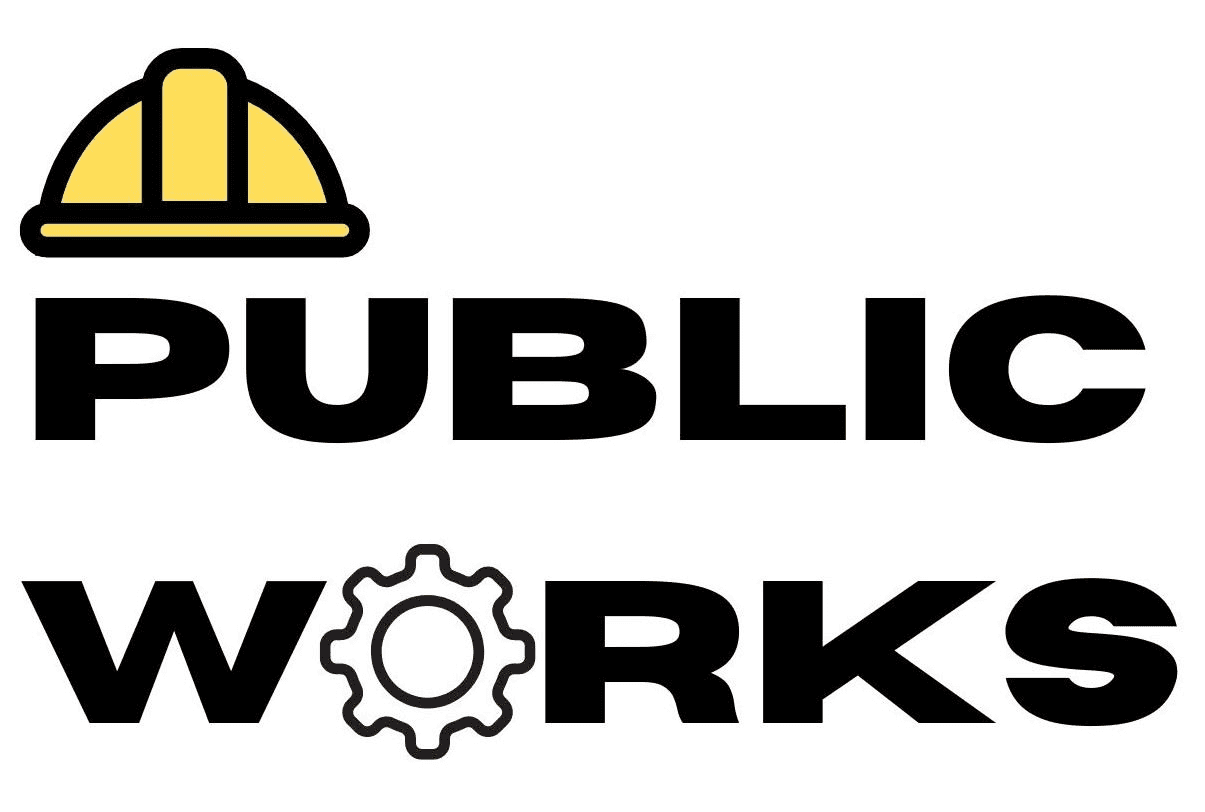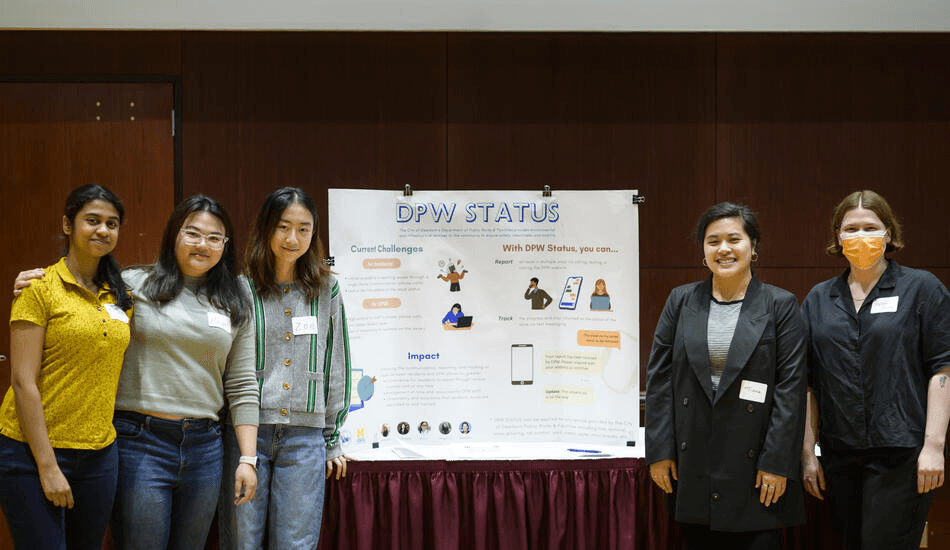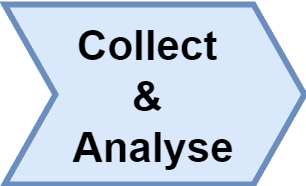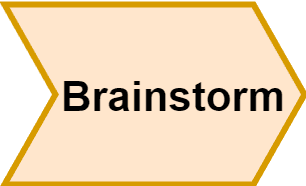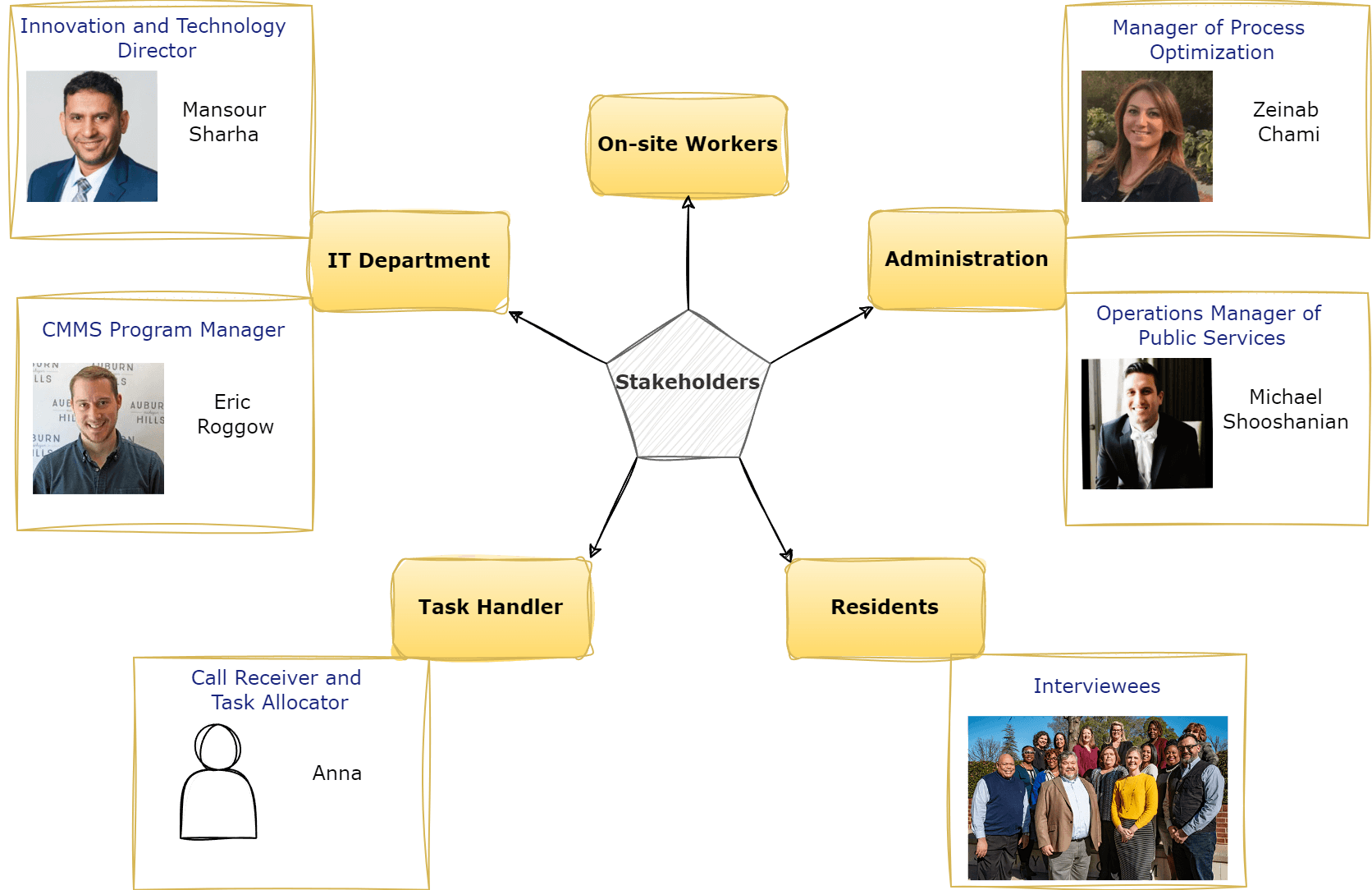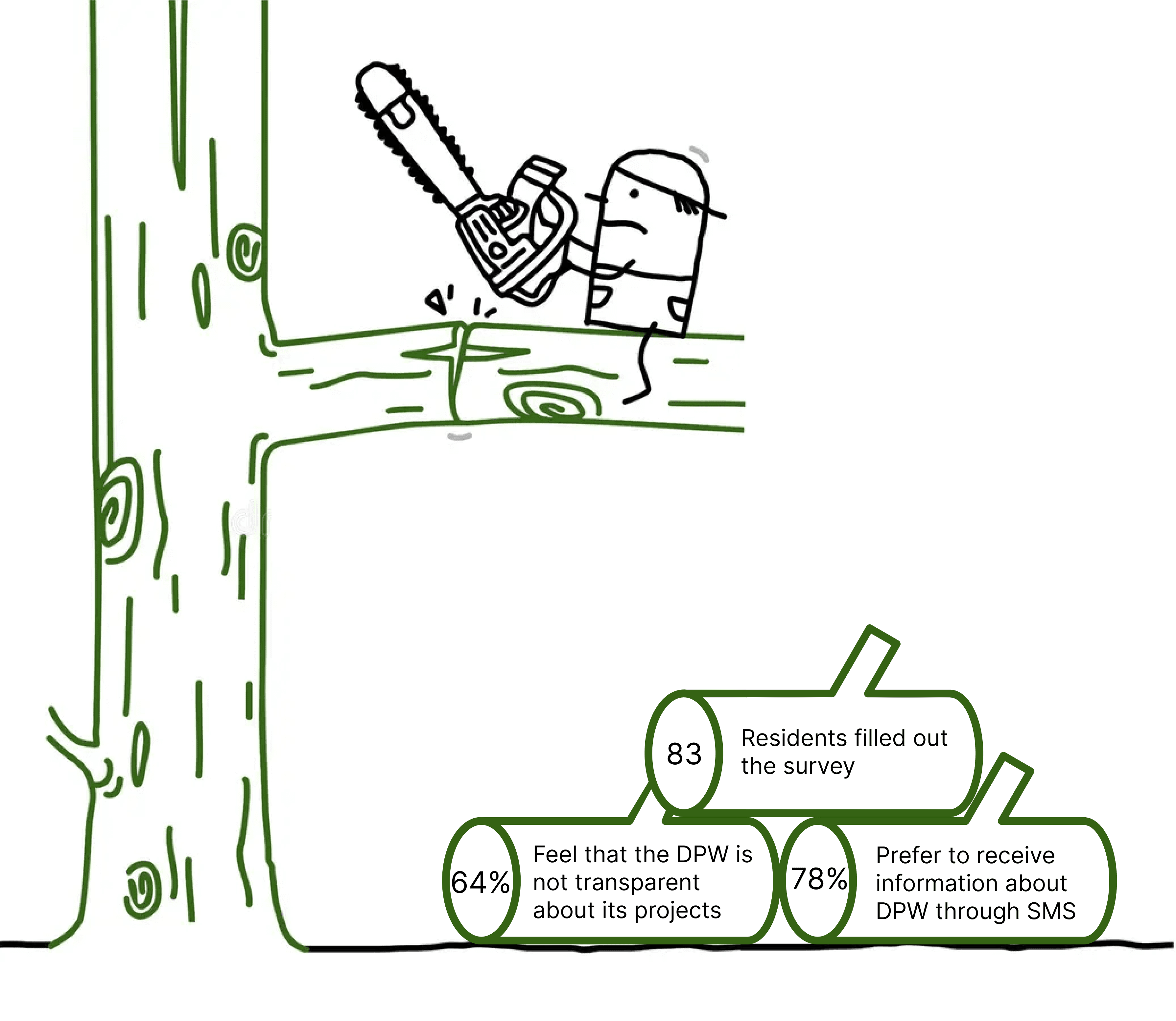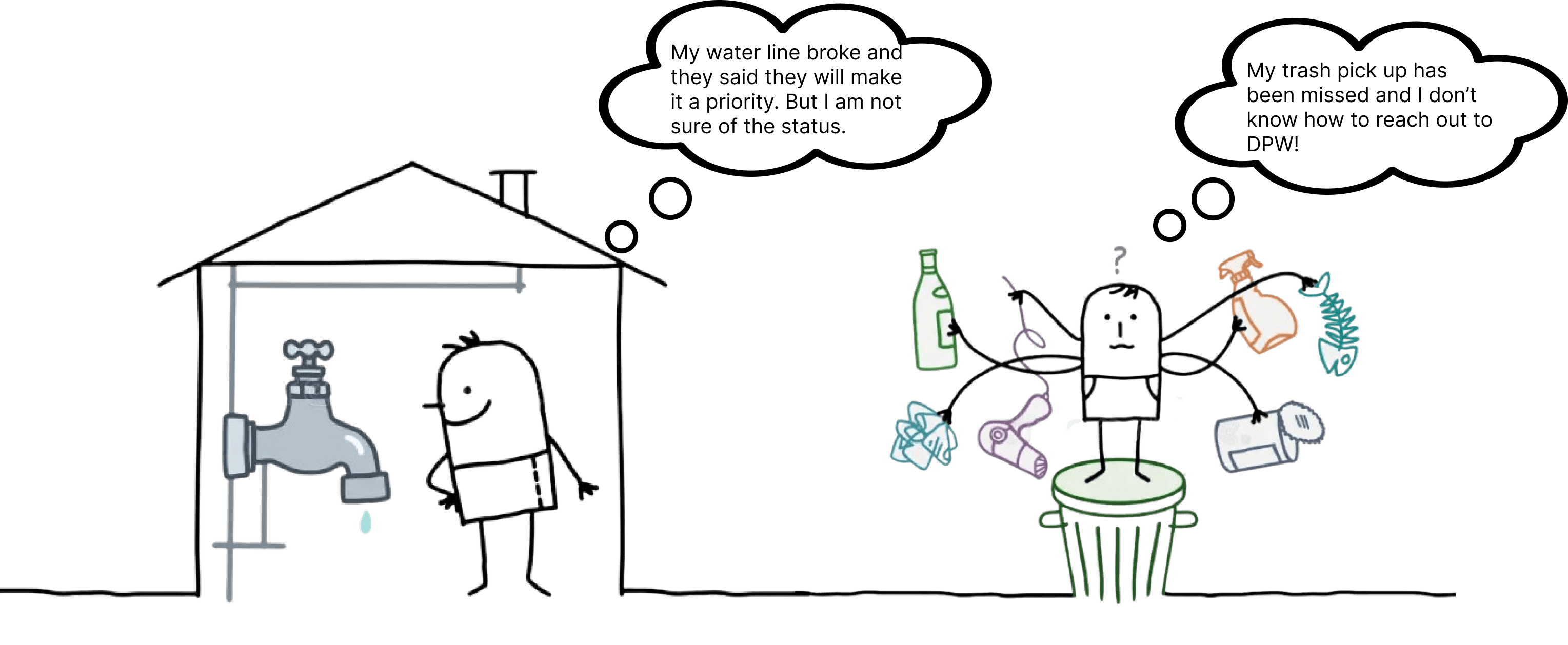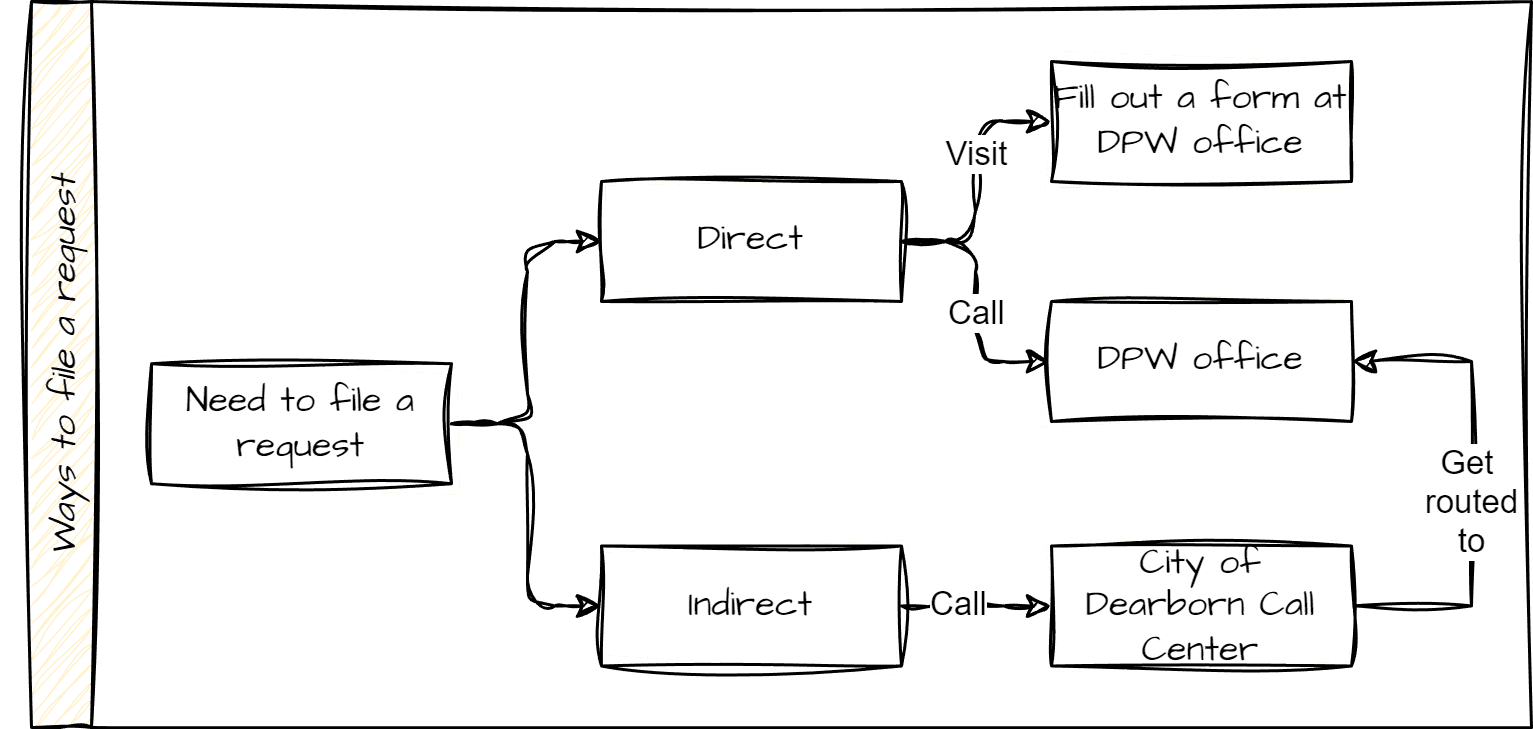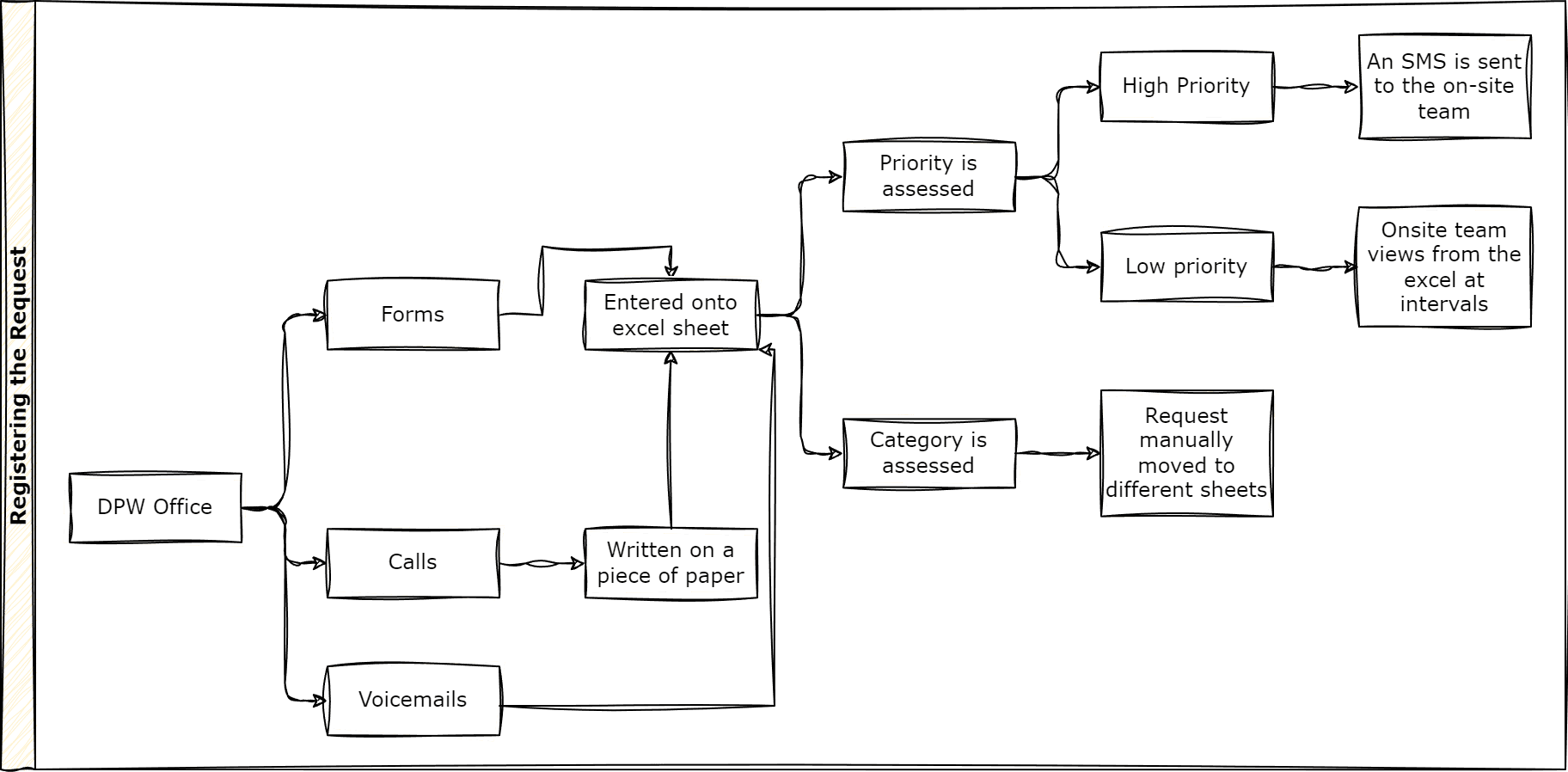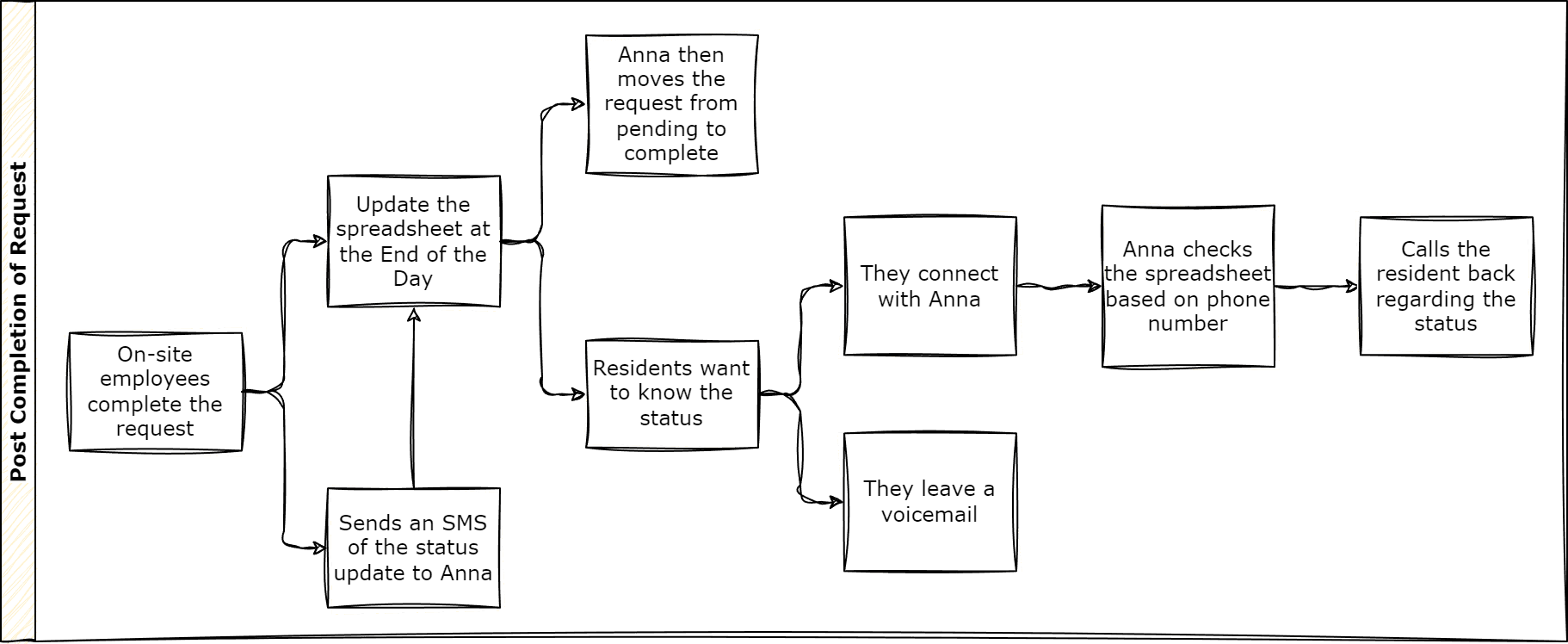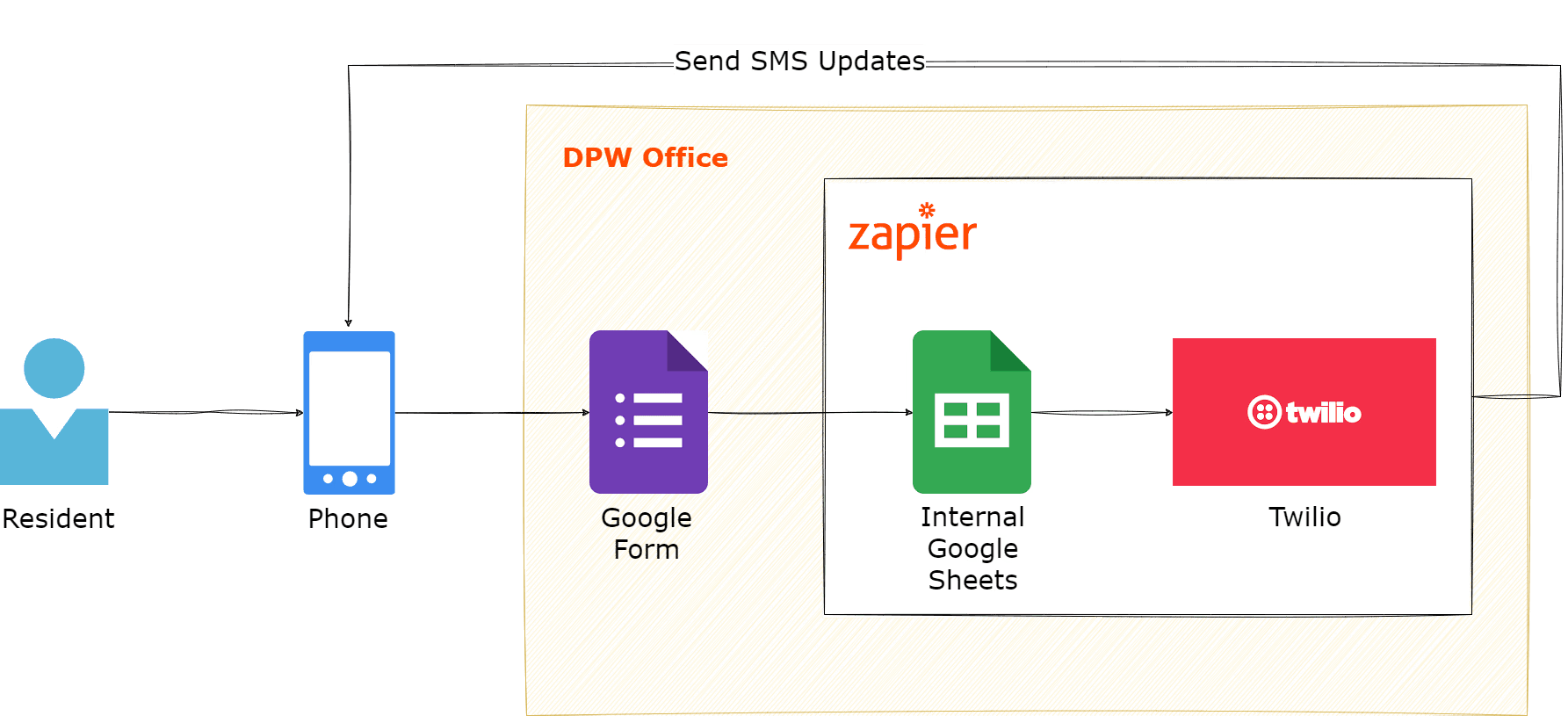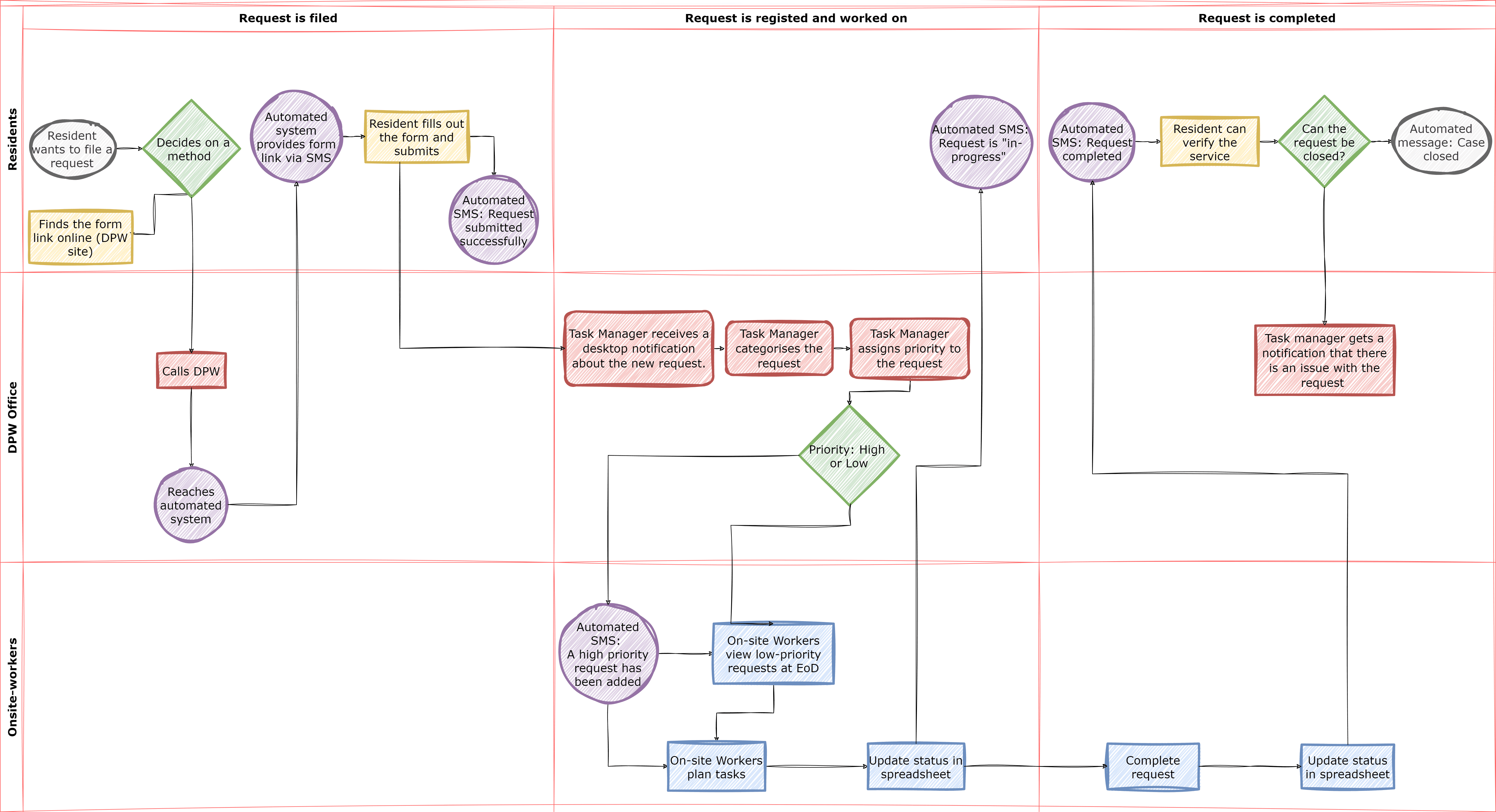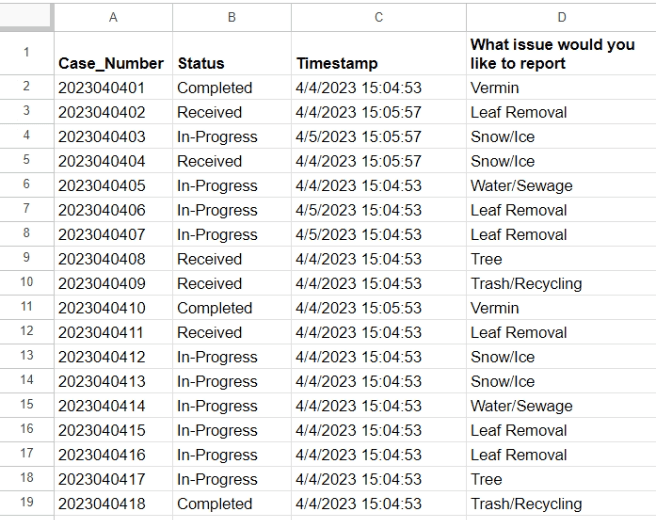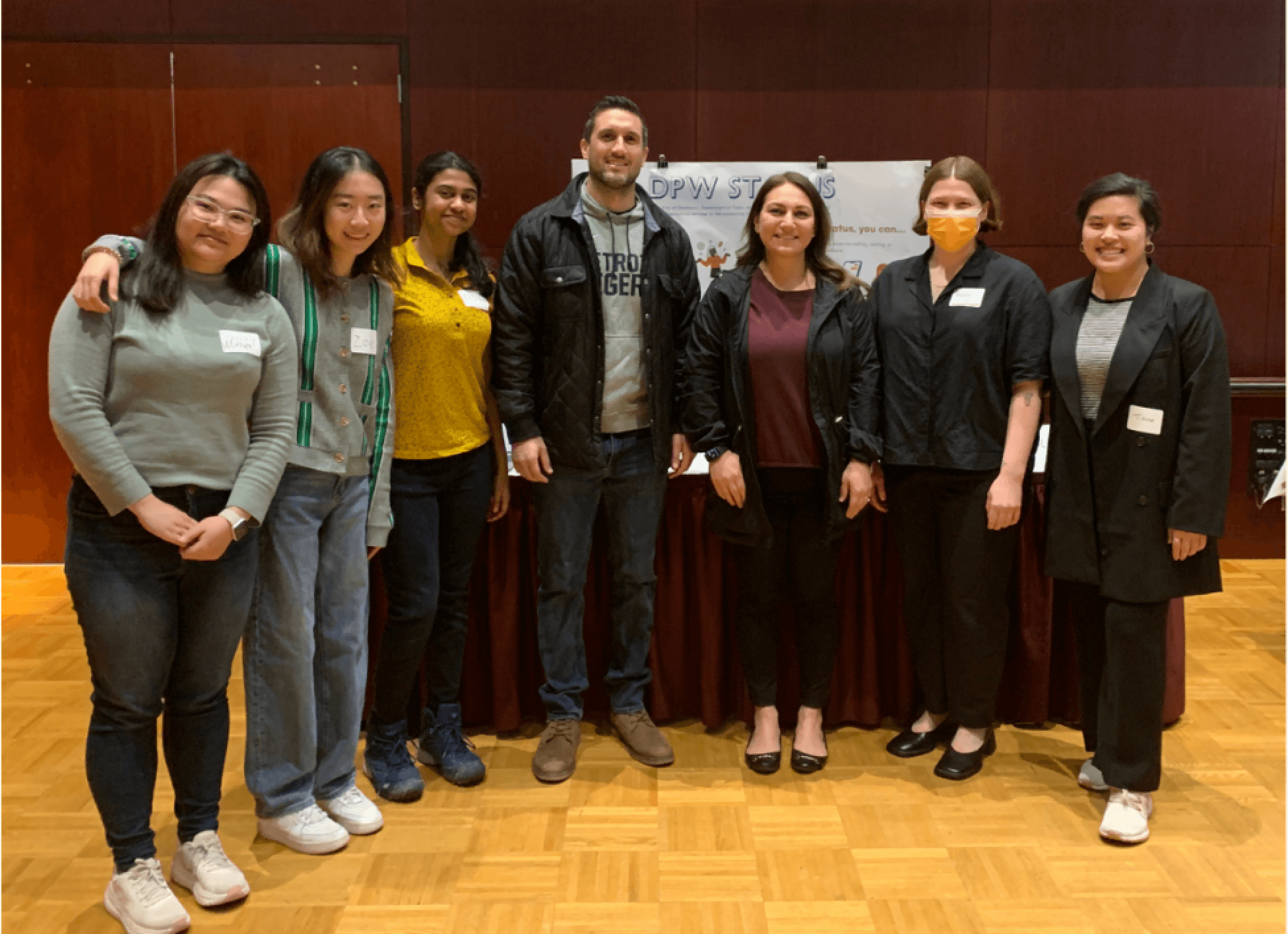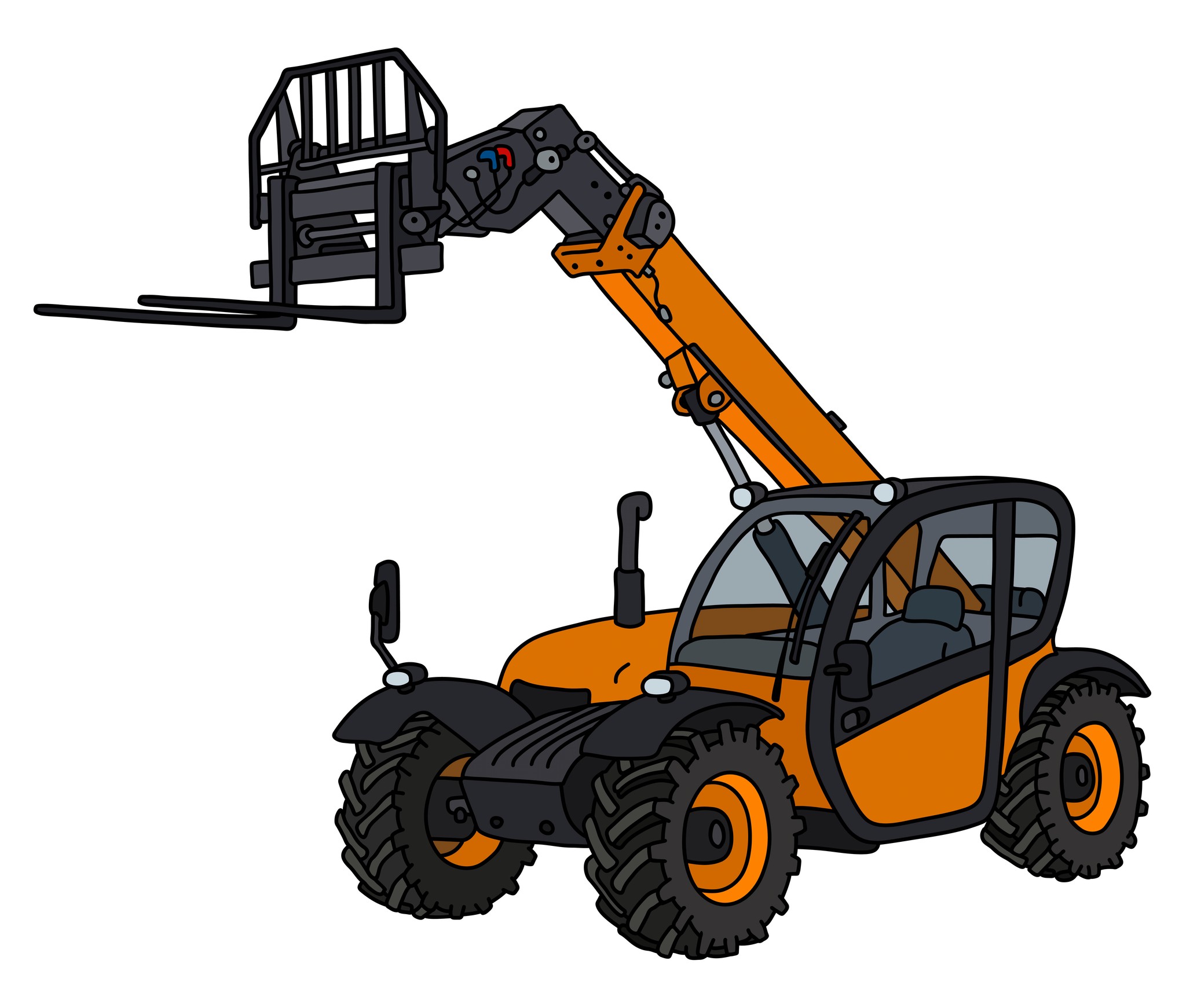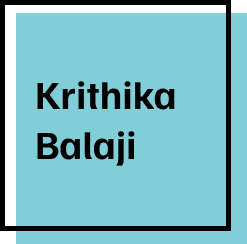Contribution:
Research, Strategy, Develop
Team:
2x Researchers, 1x Manager, 2x Designers
Duration:
2023, 5 months
Client:
Department of Public Works
Citizen Interaction Design
The Citizen Interaction Design Team of Michigan partnered with the Department of Public Works, Dearborn. That is how I was able to be a part of this project
Introduction
The Department of Public Works (DPW) in Dearborn had relied on a traditional phone-based system for citizens to report issues such as potholes, streetlight outages, and garbage collection delays. Citizens would call the DPW office, and operators would manually log complaints, which often led to delayed responses and inefficiencies. This case study outlines how we collaborated with the DPW, their staff, and local residents to redesign the reporting process for more effective citizen engagement and streamlined service delivery.
The Team
From left to right:
Krithika Balaji
Minyu Li
Mengyun Liu
Tiana Huang
Alyssa Sklar
https://www.si.umich.edu/about-umsi/news/umsi-student-projects-help-michigan-city-reimagine-citizen-interaction
Define the Problem
The existing system was not user-friendly, requiring citizens to make phone calls during office hours. This process frequently led to frustration due to long wait times, incomplete issue documentation, and the lack of feedback mechanisms to inform citizens about the status of their requests. We were tasked with improving this interaction and creating a more accessible, responsive, and transparent way for citizens to report issues.
The Stakeholders
The stakeholders have been grouped into 5 categories.
Collect Data
Field Observation
Research questions
What communication channels do residents prefer?
How do residents find out about the services offered by DPW?
Survey Logs Opinions
Objectives
Ploughing Through Interviews
Objectives
Existing Workflow
Step 1: Resident files the request
Top Pain Points in Step 1
Incorrect routing
Step 2: DPW registers the request
Step 3: Post Completion of Request
Top Pain Points in Step 2 & 3

Paper records
Bottom line - There are too many steps involved and a lot of back and forth communication a paper trails that adds to the workload when there is very limited human resources to support the operation.
The barriers
“Design depends largely on the sum of all constraints — Charles Eames”
Brainstorm and Analyze
Goals
- Increase Resident Satisfaction: Improve the overall experience for residents by reducing response times, providing clear information, and resolving issues promptly.
- Optimize Resource Allocation: Ensure that resources, including personnel and equipment, are allocated efficiently to address work orders based on priority and urgency.
Enhance Communication Efficiency: Improve the clarity, timeliness, and accuracy of communications between the department and residents regarding work order statuses and updates.
Streamline Work Order Tracking: Implement a more efficient system for tracking work orders from initiation to completion, ensuring transparency and accountability.
MoSCoW Method
The findings and goals are effectively prioritized using the MoSCoW method
Solutions Considered
Rationale for Consideration:
Interviews with residents and onsite employees revealed discomfort with new technology, not a lack of understanding.
Participants were comfortable with SMS but struggled to transition from traditional phone calls.
A simple, intuitive application could bridge this gap, providing an accessible platform for communication and updates.
Reason for Rejection:
The main issue was resistance to adopting new digital platforms, not the complexity of the technology.
Developing and maintaining an app would require substantial costs and resources, exceeding project budget constraints.
Many users preferred traditional communication methods, questioning the app's potential to improve engagement and satisfaction.
Rationale for Consideration:
Task management systems are known for organizing and streamlining workflows.
Features like task tracking, real-time updates, and SMS notifications could enhance work order management and communication.
These systems are widely used across industries, indicating reliability and effectiveness.
Reason for Rejection:
Managing a high volume of user requests through these platforms was complex, requiring significant process changes.
Extensive knowledge transfer sessions would be needed, which the current staff could not accommodate due to time constraints.
The implementation and operational costs exceeded the available budget, making this solution impractical.
Rationale for Consideration:
Interviews with the administration and IT department revealed that the Department of Public Works (DPW) is partnering with Google, ensuring that subscriptions to Google products would be budget-friendly.
The administration previously used Excel sheets, and Google Sheets offers a similar interface and functionality, facilitating a smooth transition.
This solution requires only a small learning curve, minimizing the impact on staff and avoiding the burden of adapting to entirely new technology.

Reason for Acceptance:
The budget-friendly nature of the partnership with Google makes this solution financially viable.
The similar mental model between Excel and Google Sheets ensures that staff can quickly adapt to the new system with minimal training.
Google Sheets can streamline workflow management and improve communication efficiency without overwhelming the team with unfamiliar technology.
Develop
The services used
Proposed Workflow
Its a simple 3 step solution!
Report
Residents can report the issue via a Google Form
Update
The reported issue will be automatically synced to the Google sheet, where DPW staff can view and handle the request.
Notify
The resident will receive a synchronous SMS notification when the DPW staff updates the request status.
Key Features:
User-friendly submission process
Citizens could easily fill out a form to report issues, complete with details like location and photos.
Key Performance Indicators
We worked closely with DPW staff to identify meaningful metrics that would help measure the success of the new system. Some of the KPIs we tracked included:
Reduction in report processing time
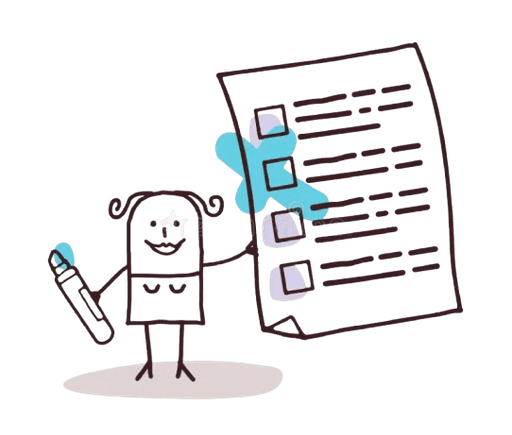
Compared to the phone-based system, the new form led to a significant reduction in the time it took for DPW staff to process and prioritize citizen requests.
Increase in citizen engagement

The number of reported issues increased by 30% in the first three months (pilot phase), suggesting that the system was more accessible and easier to use.
Improved response time

DPW was able to resolve issues 20% faster, as the new system allowed staff to act on issues more efficiently.
Positive citizen feedback

Surveys showed a 40% increase in citizen satisfaction, particularly regarding the ability to track the status of their reported issues.
Feedback
- Positive Reception:
- The management appreciated the cost-effectiveness of the solution, especially given the existing partnership with Google, which aligns well with budgetary constraints.
- They acknowledged the minimal learning curve associated with transitioning from Excel to Google Sheets, recognizing that this would facilitate a smoother and faster implementation process.
- The ease of use and familiarity of Google Sheets were noted as key benefits, as they would reduce the need for extensive training and support, thereby minimizing disruption to ongoing operations.
- Concerns and Considerations:
- While the transition to Google Sheets was seen as straightforward, some management members expressed concerns about data security and the need to ensure that sensitive information would be adequately protected within the Google ecosystem.
- There was also a request for clarification on the level of support and training that would be provided to staff during the transition phase, to ensure that all team members could effectively utilize the new system.
- Management highlighted the importance of scalability and wanted assurance that Google Sheets would be able to handle the expected volume of data and users as the department grows.
Improve
Key Takeways
- Using familiar technology can make a big difference in how quickly and effectively a team adapts to new systems. This familiarity reduced anxiety about new technology and made the transition smoother.
Listening to the concerns and technological comfort levels of both residents and staff was critical in choosing the right solution. Understanding their needs helped us select a tool that was not only functional but also user-friendly.

